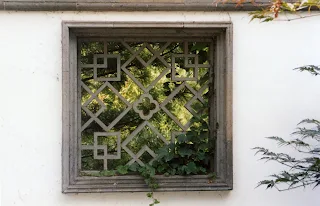 |
| My photo of Restaurant Bertrand |
I visited Restaurant Emile Bertrand once with my father when I was a child (around 1955). It wasn't until around 1994 that I returned there, more by chance than anything else. That first visit, over fifty years ago, he and I may have come down from Windsor Station, where he worked. Why else would we have been in the neighbourhood? But why would I have been at Windsor Station? I remember that visit, the stainless steel counter tops, and that Emile Bertrand's specialty was spruce beer (a soda pop, or "soft drink" as we say in Canada) that has limited appeal and has a sprucey sweet taste, like the smell of spruce tree resin. It's an acquired taste but when I start drinking the stuff I can't get enough! They used to make this drink on the premises, as well as serving the obligatory French fries and hot dogs "fully dressed" (meaning garnished with chopped cabbage and onion)... I like a toasted bun and grilled or steamed hot dog. Premier Bourassa got himself into trouble years ago by referring to certain lower class people as "eaters of hot dogs", but I have a craving for hot dogs every now or then. I rediscovered Restaurant Emile Bertrand fifteen years ago and enjoyed going there again a few times, for sentimental reasons, and I wrote a poem referring to that day I went there with my father. The restaurant was eventually closed, due to a family dispute it seems, about two years ago, and although it was announced they would reopen, they never did (as far as I know). The new ,almost upscale, restaurant now located on the premises is for a new demographic, a younger educated clientele, who want whole grain bread, etc., not fully dressed hot dogs and French fries. Restaurant Emile Bertrand was located on rue Notre Dame West just down from Guy Street, or Peel Street.
 My maternal grandfather, John Richards Parker, came to Montreal with his wife around 1912. Here is a photograph of him, at the Central Fire Station in Old Montreal, where he worked. He is first on the far right.
My maternal grandfather, John Richards Parker, came to Montreal with his wife around 1912. Here is a photograph of him, at the Central Fire Station in Old Montreal, where he worked. He is first on the far right. Here is my maternal grandmother, Bertha Chew Parker, taken when she still lived in Blackburn, Lancashire, England.
Here is my maternal grandmother, Bertha Chew Parker, taken when she still lived in Blackburn, Lancashire, England. Here is my grandfather's mother.
Here is my grandfather's mother.  Here is my grandfather at the fire station on Somerled near Cavendish, in the Notre Dame de Grace neighbourhood of Montreal. He is second from the left. Photograph dated July 1940.
Here is my grandfather at the fire station on Somerled near Cavendish, in the Notre Dame de Grace neighbourhood of Montreal. He is second from the left. Photograph dated July 1940.














































